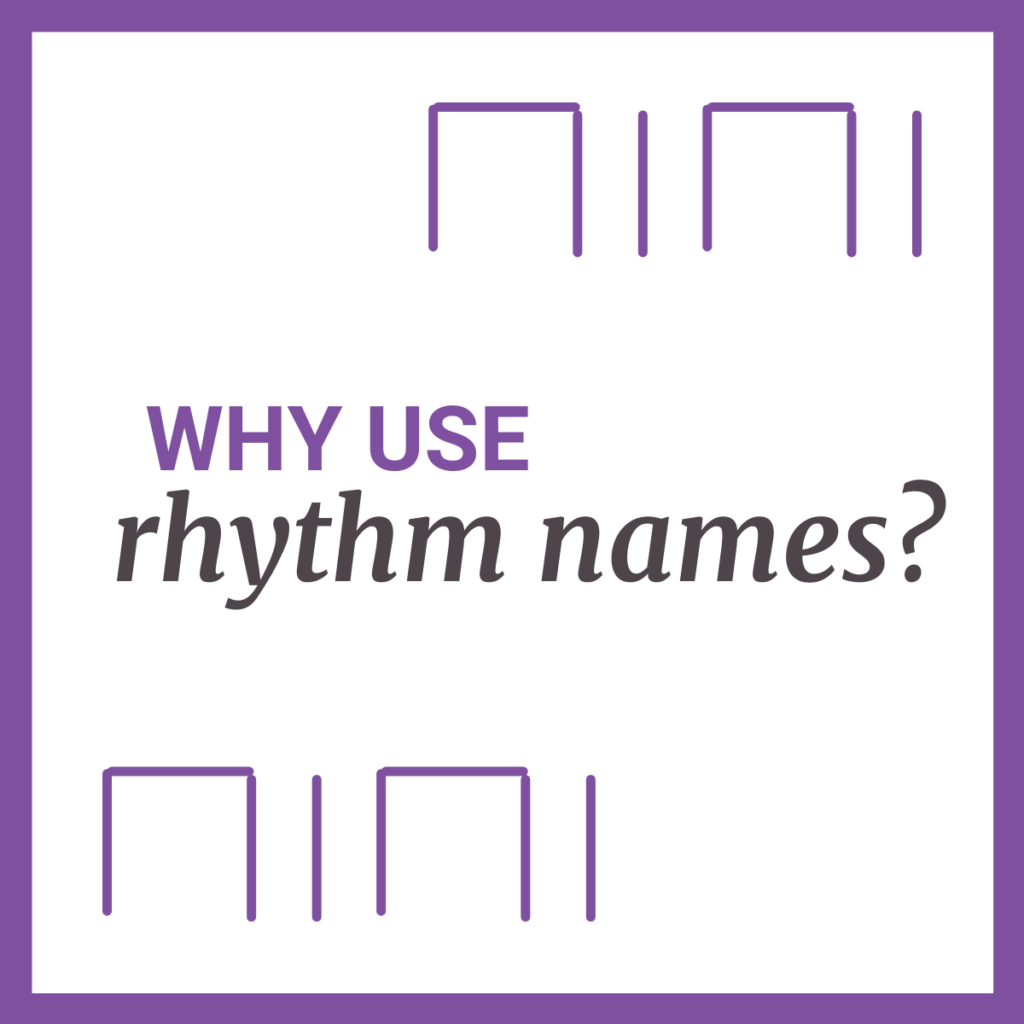Why Use Rhythm Names?
Everything you need to strengthen your musicianship skills

Rhythm names, also known as time names, rhythm syllables etc, are functional rhythm!
Rhythm/time names give a VERBAL rhythmic language that sounds correct when spoken.
This means you are learning the SPELLING for rhythm so when you hear a rhythm you know how to SPELL (write/say) it.
Benefits
- the rhythm names actually “sound” like the rhythm they represent and last for the same amount of time
- give a tangible thing to say and think for rhythm (just as solfa – do, re, mi etc- give a tangible thing to say or think when representing pitch)
- internalise (audiate) rhythm
- sightread rhythm patterns
- recognise and transcribe rhythmic patterns
- aid in reading, writing, memorisation, dictation, practice, and performance of music
Example from page 45 of the Musicianship & Aural Training for the Secondary School Level 1 books:

Example from page 93 of the Musicianship & Aural Training for the Secondary School Level 2 books:

Example from page 133 of the Musicianship & Aural Training for the Secondary School Level 3 books:

Example from page 93 of the Musicianship & Aural Training for the Secondary School Level 3 books:

Important note:
The use of rhythm names does not replace learning the theoretical names of the rhythms e.g. crotchets and quarter notes. Theoretical names help in identifying, classifying and discussing rhythm. However, being able to name or identify something is not the same as internalising it as sound. Theoretical names do not teach what the rhythms sound like.
Read on for more….
Rhythm syllables were developed so that students could have a musical way to read rhythm. This idea is not new, systems like this have been in use for many hundreds of years in Indian music (where it is called Bol) in Japan (where it is called kuchi shoga) and in African music. The system we use here was adapted from the work of the French musician and teacher, Emile-Joseph Chevé (1804-1864).
The idea is that this system could get away from mathematical counting (which feels unmusical) while still showing durations and relationships between notes. A rhythm syllable system gives a set of nonsense syllables or sounds to associate with written notation and beat formations.

